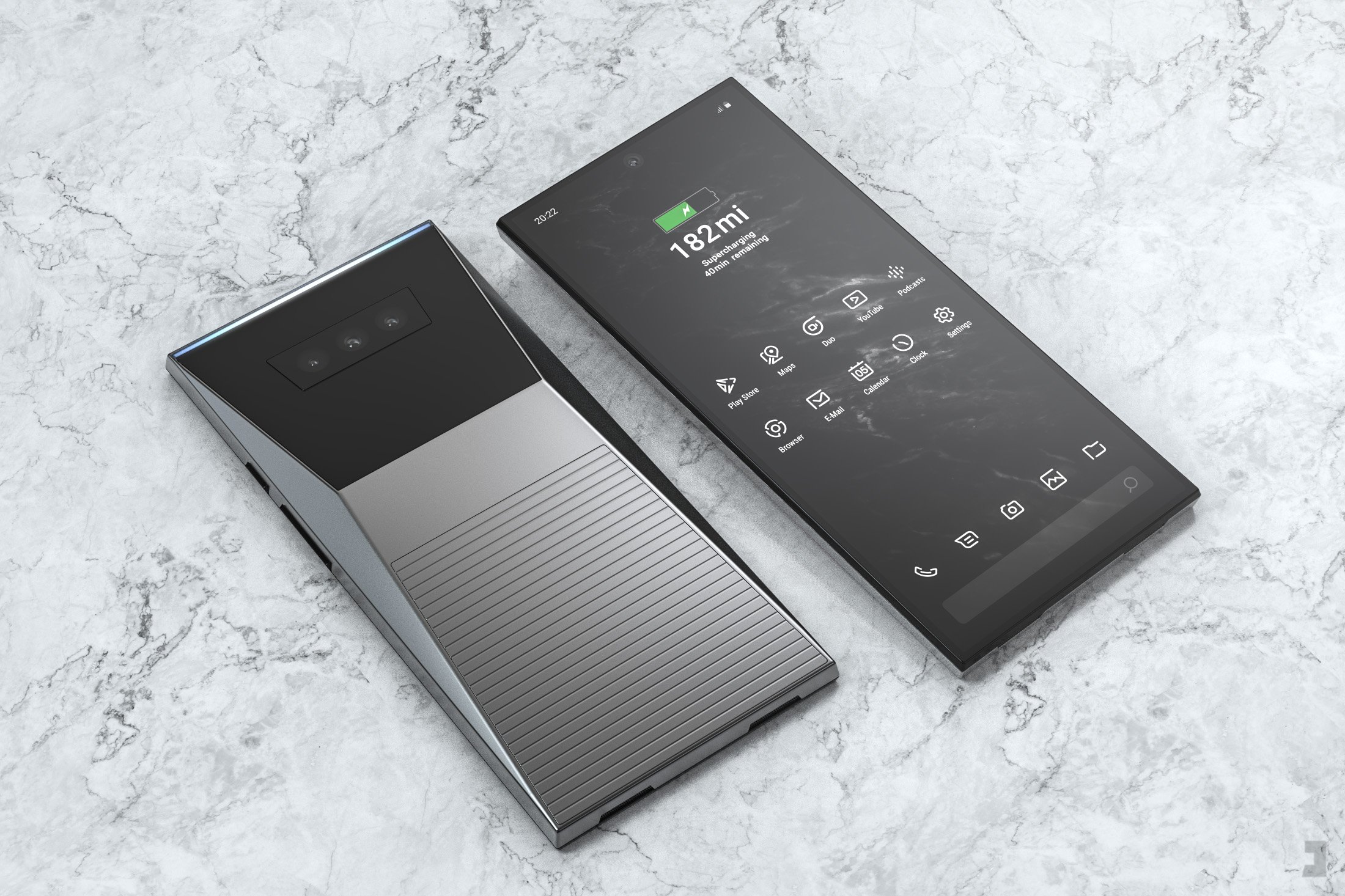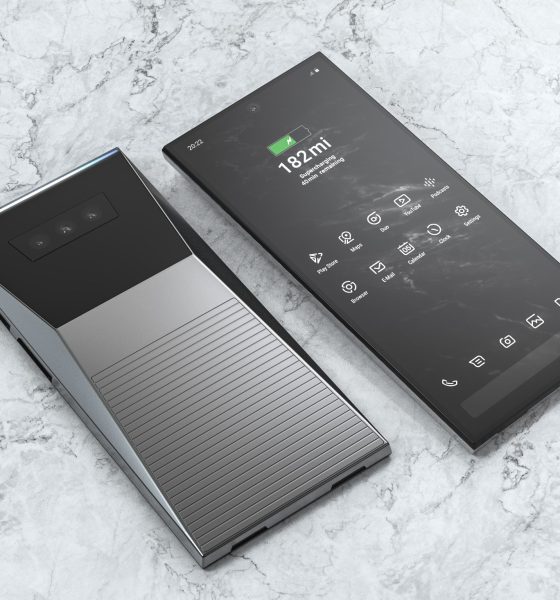

News
Elon Musk to make alternative smartphone if Apple or Google bans Twitter
The idea of an Elon Musk-led company creating a smartphone has caught the imagination of many over the years, so much so that some YouTube channels continue to peddle the alleged release of products like the “Tesla Pi Phone” that’s supposedly poised to compete with Apple’s iPhone and other smartphones. (This may sound insane, but such videos are still garnering views until today.)
But while such videos have become quite a running joke among those who closely follow Elon Musk and his projects, recent comments by the Tesla CEO suggest that a smartphone from a Musk-led company may not be too farfetched at all.
Musk has been neck-deep in controversy since he completed his acquisition of social media platform Twitter. Among his most recent controversial moves involved a poll which asked users of the platform if it would be a good idea to offer general amnesty to suspended accounts. The poll ended with users deciding that amnesty should be given.
Speaking to the Washington Post, Alejandra Caraballo, clinical instructor at Harvard Law’s cyberlaw clinic, called on Apple and Google to “seriously” start exploring the idea of kicking out Twitter from their respective app stores. Caraballo argued that Musk’s decisions on Twitter make the platform dangerous.
“Apple and Google need to seriously start exploring booting Twitter off the app store. What Musk is doing is existentially dangerous for various marginalized communities. It’s like opening the gates of hell in terms of the havoc it will cause. People who engaged in direct targeted harassment can come back and engage in doxing, targeted harassment, vicious bullying, calls for violence, celebration of violence. I can’t even begin to state how dangerous this will be,” Caraballo said.
Musk, for his part, has highlighted multiple times that Twitter would not tolerate hate speech or posts that instigate violence. These include recent calls to action from a group that invited people to attack Tesla stores to express their displeasure at Musk.
The topic of Apple and Google potentially kicking off Twitter from their app stores was discussed thoroughly on the social media platform. It did not take long before some users like podcast host Liz Wheeler noted that if Twitter gets banned by Apple and Google, it would probably be a good idea for Musk to simply produce a smartphone himself. Musk responded positively to Wheeler’s post, noting that while he hopes Twitter does not get booted off the Apple and Android app stores, he would make an alternative phone if the need arises.
“I certainly hope it does not come to that, but, yes, if there is no other choice, I will make an alternative phone,” Musk wrote.
Inasmuch as the idea of Musk creating a phone seems farfetched for now, the smartphone market would benefit with the addition of an alternative device simply because the segment has plateaued in the past years. A look at the iPhone’s significant but iterative improvements in its cameras and processors every year is a sign of this trend. The same is true on the Android side, with devices save for Samsung’s Fold series mostly focusing on iterative upgrades every year.
Plus, Musk’s companies tend to inspire people, which is one of the reasons why some concept artists have already toyed with the idea of a Tesla-inspired phone. Among these is concept creator Jonas Daehnert, who created a Cybertruck-inspired design for a potential smartphone following the all-electric pickup truck’s unveiling in late 2019. Daehnert’s design was met with much appreciation from social media users.
One can only hope, of course, that Musk does not release such a device because of Twitter being banned by Apple and Google.
Would you use a smartphone made by an Elon Musk-led company? Don’t hesitate to contact us with news tips. Just send a message to simon@teslarati.com to give us a heads up.

News
Tesla FSD fleet is nearing 7 billion total miles, including 2.5 billion city miles
As can be seen on Tesla’s official FSD webpage, vehicles equipped with the system have now navigated over 6.99 billion miles.

Tesla’s Full Self-Driving (Supervised) fleet is closing in on almost 7 billion total miles driven, as per data posted by the company on its official FSD webpage.
These figures hint at the massive scale of data fueling Tesla’s rapid FSD improvements, which have been quite notable as of late.
FSD mileage milestones
As can be seen on Tesla’s official FSD webpage, vehicles equipped with the system have now navigated over 6.99 billion miles. Tesla owner and avid FSD tester Whole Mars Catalog also shared a screenshot indicating that from the nearly 7 billion miles traveled by the FSD fleet, more than 2.5 billion miles were driven inside cities.
City miles are particularly valuable for complex urban scenarios like unprotected turns, pedestrian interactions, and traffic lights. This is also the difference-maker for FSD, as only complex solutions, such as Waymo’s self-driving taxis, operate similarly on inner-city streets. And even then, incidents such as the San Francisco blackouts have proven challenging for sensor-rich vehicles like Waymos.
Tesla’s data edge
Tesla has a number of advantages in the autonomous vehicle sector, one of which is the size of its fleet and the number of vehicles training FSD on real-world roads. Tesla’s nearly 7 billion FSD miles then allow the company to roll out updates that make its vehicles behave like they are being driven by experienced drivers, even if they are operating on their own.
So notable are Tesla’s improvements to FSD that NVIDIA Director of Robotics Jim Fan, after experiencing FSD v14, noted that the system is the first AI that passes what he described as a “Physical Turing Test.”
“Despite knowing exactly how robot learning works, I still find it magical watching the steering wheel turn by itself. First it feels surreal, next it becomes routine. Then, like the smartphone, taking it away actively hurts. This is how humanity gets rewired and glued to god-like technologies,” Fan wrote in a post on X.
News
Tesla starts showing how FSD will change lives in Europe
Local officials tested the system on narrow country roads and were impressed by FSD’s smooth, human-like driving, with some calling the service a game-changer for everyday life in areas that are far from urban centers.

Tesla has launched Europe’s first public shuttle service using Full Self-Driving (Supervised) in the rural Eifelkreis Bitburg-Prüm region of Germany, demonstrating how the technology can restore independence and mobility for people who struggle with limited transport options.
Local officials tested the system on narrow country roads and were impressed by FSD’s smooth, human-like driving, with some calling the service a game-changer for everyday life in areas that are far from urban centers.
Officials see real impact on rural residents
Arzfeld Mayor Johannes Kuhl and District Administrator Andreas Kruppert personally tested the Tesla shuttle service. This allowed them to see just how well FSD navigated winding lanes and rural roads confidently. Kruppert said, “Autonomous driving sounds like science fiction to many, but we simply see here that it works totally well in rural regions too.” Kuhl, for his part, also noted that FSD “feels like a very experienced driver.”
The pilot complements the area’s “Citizen Bus” program, which provides on-demand rides for elderly residents who can no longer drive themselves. Tesla Europe shared a video of a demonstration of the service, highlighting how FSD gives people their freedom back, even in places where public transport is not as prevalent.
What the Ministry for Economic Affairs and Transport says
Rhineland-Palatinate’s Minister Daniela Schmitt supported the project, praising the collaboration that made this “first of its kind in Europe” possible. As per the ministry, the rural rollout for the service shows FSD’s potential beyond major cities, and it delivers tangible benefits like grocery runs, doctor visits, and social connections for isolated residents.
“Reliable and flexible mobility is especially vital in rural areas. With the launch of a shuttle service using self-driving vehicles (FSD supervised) by Tesla in the Eifelkreis Bitburg-Prüm, an innovative pilot project is now getting underway that complements local community bus services. It is the first project of its kind in Europe.
“The result is a real gain for rural mobility: greater accessibility, more flexibility and tangible benefits for everyday life. A strong signal for innovation, cooperation and future-oriented mobility beyond urban centers,” the ministry wrote in a LinkedIn post.
News
Tesla China quietly posts Robotaxi-related job listing
Tesla China is currently seeking a Low Voltage Electrical Engineer to work on circuit board design for the company’s autonomous vehicles.

Tesla has posted a new job listing in Shanghai explicitly tied to its Robotaxi program, fueling speculation that the company is preparing to launch its dedicated autonomous ride-hailing service in China.
As noted in the listing, Tesla China is currently seeking a Low Voltage Electrical Engineer to work on circuit board design for the company’s autonomous vehicles.
Robotaxi-specific role
The listing, which was shared on social media platform X by industry watcher @tslaming, suggested that Tesla China is looking to fill the role urgently. The job listing itself specifically mentions that the person hired for the role will be working on the Low Voltage Hardware team, which would design the circuit boards that would serve as the nervous system of the Robotaxi.
Key tasks for the role, as indicated in the job listing, include collaboration with PCB layout, firmware, mechanical, program management, and validation teams, among other responsibilities. The role is based in Shanghai.
China Robotaxi launch
China represents a massive potential market for robotaxis, with its dense urban centers and supportive policies in select cities. Tesla has limited permission to roll out FSD in the country, though despite this, its vehicles have been hailed as among the best in the market when it comes to autonomous features. So far, at least, it appears that China supports Tesla’s FSD and Robotaxi rollout.
This was hinted at in November, when Tesla brought the Cybercab to the 8th China International Import Expo (CIIE) in Shanghai, marking the first time that the autonomous two-seater was brought to the Asia-Pacific region. The vehicle, despite not having a release date in China, received a significant amount of interest among the event’s attendees.








